Systems of the nearest line of defense: on equal terms with threats
The most common ZACBR in the world is the 20-mm short-range Raytheon Mk15 Phalanx system, currently updated via Tech Refresh to prevent obsolescence, maintain / increase reliability and improve performance.
In recent years, the naval forces have become involved in countering new forms of air and surface threats. These threats influence and will influence the development of multi-level defense of fleets around the world. New supersonic and highly maneuverable threats in the face of anti-ship cruise missiles, combined with a number of asymmetric threats, help reduce the response time of the nearest-range anti-aircraft artillery complexes, force defenders to modernize existing systems, unite them in a network and increase the range, and at the same time look more closely at the latest technologies, for example , laser weapons not covered in this article.
Raytheon Mk 15 Phalanx CIWS (Close-in Weapon system), described by the developer as an “all-weather, fully automatic, functionally complete shipboard system of constant readiness”, is the most common anti-aircraft artillery complex of the nearest frontier (FACR). The complex includes radar and optoelectronic stations for conducting search, detection, evaluation and tracking of targets, a six-barreled 20-mm gun M61A1 of the Gatling system, which can fire armor-piercing ammunition with a rate of fire of up to 4500 rounds per minute, and also a magazine with 1550 ammunition capacity . More 850 complexes have been sold to 25 countries, including the USA; at the same time, serial contracts continue to be executed, which indicates the demand for this system in the short and medium term. The Phalanx complex today provides short-range defense against both anti-ship missiles (ASM) and asymmetrical threats, for example, small-sized high-speed boats and low-flying helicopters and airplanes. The complex was adopted in 1980 year, and in the past few years, Raytheon has released the Block 1B complex configuration, which includes a stabilized thermal imager and an automatic tracking video device, which not only captures asymmetrical threats, but also increases the possibilities CRP The Block 1B variant also features modified General Dynamics Optimized Gun Barrel (OGB) barrels, the installation of which has reduced the dispersion of projectiles. The Phalanx complex is also being upgraded with a new radar (Block 1B Baseline 2), the integration of which must be completed in the 2019 year. This modern digital system with increased reliability provides improved capabilities when working on advanced RCC. In order to extend the life of the complexes, at least until 2040, Raytheon, together with the US Navy, is launching the Technology Refresh program in 2018 to prevent obsolescence, maintain / increase reliability, increase capacity and provide operators with inexpensive spare parts. When carrying out major repairs under Tech Fresh, the pneumatic system of the new electric system EGDS (electric gun drive system) will be replaced, which will allow changing the rate of fire (this is not possible at the moment) and reducing the consumption of ammunition, upgraded the ELX electronic shield and refined local and LCS / RCS remote control (Local Control Station and Remote Control Station). The operator’s work will be simplified, the overall system weight will be reduced, as well as the total cost of servicing the complex.
The Dutch Navy and Thales Nederland are implementing the Goalkeeper Upkeep no maintenance program, increasing capabilities and reducing the cost of servicing the second largest AFRC, after which it will remain in service for at least 2025
Compliance with the latest threats and solving the aging problem lies at the heart of the modernization program of another popular complex, which is in service with many fleets of the world. ZAKBR Goalkeeper, delivered to the Netherlands in the mid-80s and seven other countries, including South Korea, Belgium, Chile, Portugal, Qatar and the UK (currently decommissioned), was developed by the Dutch company Hollandze Signalapparaten (currently Thales Nederland). The complex is an autonomous melee weapon system in which the entire sequence, from search to destroying a target, is performed automatically thanks to the coordinated work of individual search and tracking radars, a camera and a 30 mm GAU-8 / A seven-barreled gun, which works according to the Gatling principle and having a rate of 4200 rds / min. All this is mounted in a single installation, including a store for 1190 armor-piercing submunitions MPDS (missile-piercing discarding-sabot). The complex is capable of hitting both air and surface targets in high-precision tracking mode, which provides dual-mode (I and K-bands) radars with continuous search mode and tracking support in scanning mode, which ensures quick capture of the next priority target in multiple attack scenarios. ZAKBR Dutch fleet undergoes a mid-life upgrade program called the Goalkeeper Upkeep. Under a 2012 contract, Thales Nederland developed a modernization package that can be offered to foreign customers through the Goalkeeper Service Life Extension Program, which includes a new color camera and infrared optical-electronic station, the latest generation control station, as well as optional software and data processor
These improvements make it possible to reduce the response time of the complex, increase accuracy and capabilities in dealing with several targets simultaneously, for example, the latest anti-ship missiles and asymmetric threats, in addition to reducing maintenance and extending the service life to 2025 year. The first updated Goalkeeper complex was tested in the middle of 2016, and the upgrade process will depend on the availability of funding.
The combination of the Oerlikon Skyshield 35 / 35 1000 revolver cannon from Rheinmetail Air Defense with Advanced AHEAD (Advanced Hit Efficiency And Destruction) destruction ammunition is at the heart of the Millenium version of the ship. In the photo is the ship control and support "Esbern Snare" (L17) of the Danish Navy with AU Millenium
On the basis of its own 35-mm 35 / 1000 revolving cannon, capable of firing AHEAD (Advanced Hit Efficiency And Destruction) air-assault shells, which is the basis of the ground-based anti-aircraft defense system and the interception of unguided missiles, artillery shells and mines Oerlikon Skyshield, Rheinmetyte developed the Oerlikon Millenium naval artillery system. According to the company Rheinmetail, combination 35-mm turret gun with a rate 1000 rounds / minute, leading fire precision shells AHEAD (each projectile comprises 152 tungsten affecting member forming lethal conical cloud before attacking the target) allows the gun complex to handle a variety of purposes, including anti-ship missiles, small-sized combat ships and asymmetrical threats, at distances in 3-4 more than the traditional Zakyr. The Millenium GDM-008 gun mount of the non-penetrating type can take up ammunition to 252 ready-made shots. It can be controlled by advanced sensors of all types, work independently or integrate into a common combat information management system (CIOS). The Millenium shipboard artillery system arouses interest in many fleets, it is in service with the Danish and Venezuelan Navy and was chosen by the Indonesian fleet for its new platforms.
ZAKBR Type 730A, developed by the Chinese Research Institute No. 713, recalls the Western ZACB design, which may indicate a possible technological borrowing. Type 730A is a functionally complete weapons system, including a seven-barrel Gatling one-magazine 30-mm gun, as well as a TR47C radar tracking system and an OFC-3 optoelectronic station. The next version of the Tour 730B differs in the layout of the sensor systems, unlike the original version, they were taken out directly from the installation itself. Judging by the technical data provided by Norinco and China Shipbuilding Trading Company (CSTC), in the Type 730В complex, two 30-mm installations are connected by a special network with remote fire monitoring and control systems - the TR-type radar and an optoelectronic station OFC. Under the local designation H / PJ12, both versions are in service with the Chinese fleet, as well as a number of other fleets, including Pakistan, Indonesia and Algeria. Recently, a more powerful version of the Tour 1130 (fleet designation H / PJ14), based on the 11-barrel 30-mm cannon with a higher rate of fire and two shops, with tracking radar and optical-electronic system, apparently entered the armament complex of the Chinese aircraft carrier " Liaoning "; it is also planned to be installed on large surface warships. At IDEX 2017, CSTC (China Shipbuilding Trading Company) showed the Type 730C variant with remote optical-electronic and radar fire control systems and weapon systems, which included surface-to-air cannon and short-range missiles. The six-barrel 30-mm gun from the original Tour 730 complex was supplemented with six AJK-10 or HO-10 missiles (fleet designation), which are already used in the FL3000N (Flying Leopard 3000 Naval) complex, described below.
The export version of the Pantsir-ME of the gun-missile complex Pantsir-С1 was presented by the company KBP at the International Navy Salon in 2017
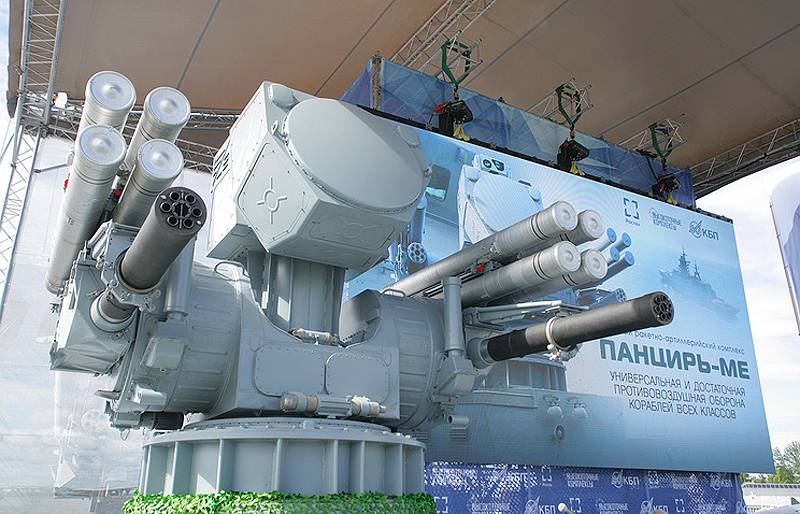
ZAKBR Pantsir-ME is armed with X-NUMX-57E and 6-mm six-barreled six-barrel anti-aircraft AO-30 (GS-18-6KD) missiles with radio command guidance of the surface-to-air class with the rate of 30 shots / min
Guns and Rockets
At one time, the Russian industry became a pioneer, having developed for its fleet, ZAKBR, armed with cannons and rockets. However, at last year's International Naval Salon, the company KBP, which is part of the state corporation Rostec, showed the latest export version of the ship's anti-aircraft missile and artillery complex Pantsir-M, designated Pantsir-ME. Upon the completion of the development, the prototype of the ship variant of the Pantsir-С1 complex was installed on the Molniya rocket boat of the 1241 project with the aim of conducting operational and qualification tests in the Baltic Sea. The Pantsir-M variant for the Russian fleet was ordered by the Russian Ministry of Defense and it is expected that the new Qarakurt corvettes of the 22800 project will be the first to receive this complex. M / ME armor is based on the developments of ZAKBR Kashtan and Kashtan-M, in which rocket and cannon armament are combined in a single system; these ZAKBR are in service with not only the Russian fleet, but also the fleets of India and China. The armor M / ME differs in the increased fire power and the increased range of action. In the combat module, two 4 container launchers for 57E6E with radio-command guidance, two 30-mm six-barrel automatic guns Gsh-6-AO-18KD with guidance according to radar with radar or IR sight, and a variant of radar control of an attenuation of the cost control of an attenuation of the cost of the shipment recurring tool, which is included in the package, will be used. 1PC2-1Е range Pantsir-C1 complex and optical-electronic complex with optical, infrared and thermal imaging channels. The range of destruction of targets for the naval variant with missile armaments is up to 20 km and artillery weapons to 4 km, the height of the destruction of targets is 15 km and 3 km, respectively.
The combat module has an automatic dual loading system; up to 32 missiles are located in the underdeck storage. The complex can be installed on ships with a displacement of 300 tons, the number of simultaneously fired targets - 4 and the number of simultaneously guided missiles - 4, while the control module can control up to 4 combat modules.
In order to effectively combat existing and future missile threats, the Leonardo company in the Strales complex combined the world-famous mid-caliber artillery 76 / 62 Super Rapido and DART guided munitions in the world.
Medium caliber and guided munitions
ZACBR Strales was developed by the Italian company Leonardo to meet the Italian fleet’s need for a weapon system capable of fighting high-speed and maneuverable air and surface targets, including supersonic cruise missiles that perform high overload maneuvers in the final segment. Currently, this complex is in service with the Colombian and Italian fleets (under the designation Davide). It is based on a combination of the world-famous 76 / 62 mm Super Rapido gun mount and the DART guided projectile (Driven Ammunition with Reduced Time of Flight - controlled ammunition with reduced flight time). In an effort to meet the needs of customers in universal weapons systems, because they now have to deal with a variety of threats, Leonardo’s defense systems division offered a Super Rapido artillery unit, equipped with a new digital console and a multi-feed magazine capable of performing the task , feed different types of ammunition, including conventional and guided.
Leonardo is constantly improving its Strales complex, which includes the NA30S dual-band fire control system with the ability to illuminate the target for targeting a DART projectile (this allows not to install the illumination antenna on the unit itself), the multifunctional operator console and the 76 / 62-mm Super Rapido gun mount
The Strales artillery unit is distinguished by a small effective scattering surface, while the sliding cover protects the Ka-band guided radar, which is necessary to generate a target illumination beam for DART guided missiles. Guided projectiles are equipped with the latest intelligent fuse 4AP, providing an increased probability of hitting air and shore targets. The fuse can operate in four programmable (remote, air blasting, shock / shock with delay, timer) and one automatic mode. DART sabot shells are distinguished by an excellent range of real fire up to 8 km (compared to the 4,5 km requirement) and an initial speed of 1200 m / s, which allows you to fly 5 km in 5 seconds. These characteristics, in combination with the declared DART maneuverability, allowed the system to demonstrate high efficiency in combating existing and prospective anti-ship missiles, while the cost of a shot is much less than the cost of using missile weapons. Leonardo is working to improve its Strales system, currently developing an add-on kit designed to integrate into existing 76 / 62 installations. It includes a NA30S dual-band fire control system with illumination of the target for DART projectile guidance (it allows not to install radar for illumination of targets on the installation itself), a multifunctional operator console and a digital console integrated into the installation, which increased the functional flexibility of the system. According to Leonardo, the system today attracts the interest of potential customers in the Middle East and Asia, while the Italian fleet is completing the installation of the Davide / Strales complex on their warships with the intention to further equip them with promising combat platforms.
Raytheon’s new RIM-2 RAM (Rolling Airframe Missile) Block 116 variant is distinguished by increased range and maneuverability, as well as improved passive radar homing and digital autopilot. The company plans to integrate the new GOS and the data transmission channel MML (Missile-to-Missile Link - channel from rocket to rocket)
Missiles
At the IDEX 2017 exhibition, Raytheon announced that it would supply the UAE with the latest version of the Block 2 ship’s direct-defense anti-aircraft missile system RIM-116 RAM (Rolling Airframe Missile - missile with hull rotation). This contract was the first commercial sale of the latest version of RAM, while Qatar had previously signed a proposal and acceptance of proposals for the same version of RAM. The RIM-116 RAM complex was developed jointly with the American company Raytheon and the German consortium RAMSys (MBDA Deutschland and Diehl group). When developing the design of the RAM rocket, the infrared seeker from the Stinger MANPADS missile was used, and the rocket engine, warhead and fuse were taken from aviation Sidewinder rockets. After the launch, the dual-mode GOS and the autopilot begin to work. On the marching portion of the flight path, a passive radar seeker is switched on, and in the final portion of the path, switching to the infrared channel occurs. In addition to the United States and Germany, the RAM missile is in service with the Navy of Egypt, Greece, Japan, South Korea, Turkey and the UAE, while the Block 2 variant was purchased by Saudi Arabia and Mexico. The upgraded version of RAM Block 1 IR is effective against a wide range of existing threats. It installed a new thermal imaging medium-wave seeker with image scanning to provide guidance on any part of the trajectory in order to increase the ability to combat new anti-ship missiles with passive and active homing systems. To combat faster maneuvering threats with a low probability of interception, the Block 2 option was developed, which reached its initial readiness in May 2015; The decision on serial production is scheduled for adoption in 2018. The Block 2 rocket has a more powerful engine and independent steering gears for the nasal rudders, which increased the range by about 50 percent and three times improved maneuverability. In addition, the missile is equipped with a passive radar seeker and a digital autopilot. RAM Block 2 also has updated fire control software. As part of the technical proposal for the RAM Block 2B Raid option, it is planned to integrate the new GOS and the missile-to-Missile Link (MML) data transmission channel from missile to missile. The development and testing of this option is planned for 2019-2021. The RAMR missiles are also armed with the SeaRAM CIWS complex, which is an 11-barrel missile launcher based on the support and guidance systems of the Phalanx complex. To date, the SeaRAM CIWS complex is installed on board the American multifunctional ships of the coastal marine zone LCS, destroyers Arly Burke and the latest Japanese platforms.
The RAM missiles are also armed with the SeaRAM CIWS complex, which is a 11-barrel rocket launcher based on the support and guidance systems of the Phalanx complex. To date, SeaRAM CIWS is installed aboard the American multi-purpose ships of the coastal sea zone LCS, destroyers Arly Burk and the latest Japanese platforms
MBDA Missile Systems, a European missile manufacturer, is seeking new customers for its VL MICA short-range anti-aircraft missile system. 3PK VL MICA was developed on the basis of a MICA air-to-air missile. The MICA missile can be equipped with either an active radar homing (MICA-EM) or thermal imaging homing (MICA-IR). It starts up in target capture mode after launch and has a range of about 20 km. The vertical launch and the absence of specialized target tracking stations ensure circular use of the rocket simultaneously for several targets. To place the VL MICA air defense missile systems on surface ships, the original launchers, vertical launchers of the VL Seawolf air defense missile systems and the SYLVER vertical launch system can be used. The VL MICA air defense system is paired with the vehicle's BIOS; it is carried out on the Ship Missile Data Link (SMDL) local area network's digital channel using a special electronic interface unit. The SMDL interface box is installed below the deck, and four small ship-to-missile data channel antennas around the mast. The VL MICA air defense ship complex is already in service or being supplied to six customers, including Oman, Morocco, the United Arab Emirates, Singapore, Egypt and Malaysia; He also ordered the fleet of Qatar.
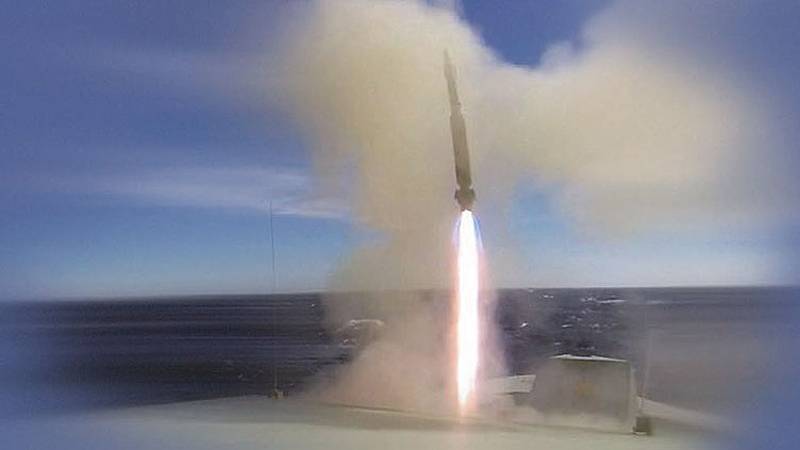
MBDA European missile manufacturer Missile Systems is looking for new customers for its shipboard anti-aircraft missile system VL MICA, although it has already been sold to seven countries
MBDA has developed SIMBAD-RC as the main air defense system for high-speed patrol boats, auxiliary and landing craft, as well as an additional air defense system for warships of the first line. SIMBAD-RC is a light complex of short-range defense capable of fighting various traditional and asymmetric threats, from aircraft and maneuverable anti-ship missiles with extremely low flight altitude to small objects, for example, UAVs, as well as small surface threats at distances up to 6,5 km. SIMBAD-RC is a further development of the dual SIMBAD launcher, which is in service with the French fleet and more 10 foreign customers. The complex consists of two gyro-stabilized launchers with two Mistral MANPADS missiles with an infrared passive seeker and a target lock before launch, a Sagem MATIS SP thermal imaging medium-wave camera and an optional wide-field daylight camera. The whole complex is controlled from the compact SMU-RC terminal and is interfaced with the ship's BIOS or surveillance systems. In addition to new customers, Turkmenistan and Saudi Arabia (not officially confirmed today), who ordered several dozens of systems, the remotely controlled system is also offered to current SIMBAD operators, since the deck launcher and mechanical interfaces are common to the previous and new versions. The Mistral missile is also part of the new SIHAM 3 weapon system, introduced in 2017 by UAE SAKT (Siham Al Khaleej Technology) together with Leonardo and MBDA. It consists of the Leonardo Marlin WS 30-mm artillery, two MBDA missiles and the Medusa Mk4 / B optical-electronic fire control system.
SIMBAD-RC lightweight automated anti-aircraft complex with Mistral missiles is designed to combat traditional and asymmetric threats, from aircraft to maneuverable anti-ship missiles or small-sized objects, at distances up to 6.5 km
The new SIHAM 3 armament system, introduced in 2017 by SAKT (Siham Al Khaleej Technology) together with Leonardo and MBDA, is based on Leonardo Marlin WS 30-mm gun mount, which is equipped with two MBDA rockets and Medusa M-4 optical-electronic fire control / B
In November last year, after a year and a half of testing aboard the Israeli corvette Sa'ar 5, the Israel Defense Forces announced the readiness of the ship's Naval Iron Dome air defense system. The shipborne version, based on the ground-based Iron Dome air defense system, which already has more than 1500 successful intercepts behind it, was developed jointly by the army and Rafael Advanced Defense Systems in order to meet the urgent requirements for protecting such strategic national maritime resources as oil and gas, and as well as offshore platforms. According to the developer, Rafael Advanced Defense Systems, C-Dome (sea version of Iron Dome) provides complete protection of the upper hemisphere from massive attacks of various weapons from different directions, for example, missiles, high-precision projectiles, drones and ballistic missiles.
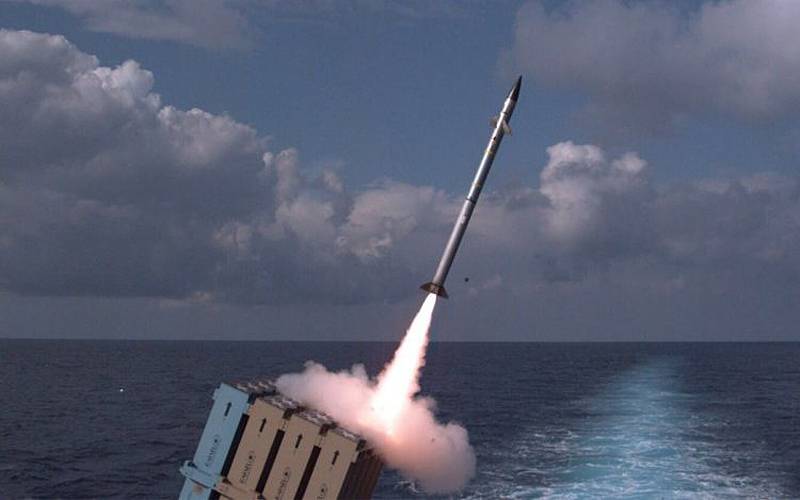
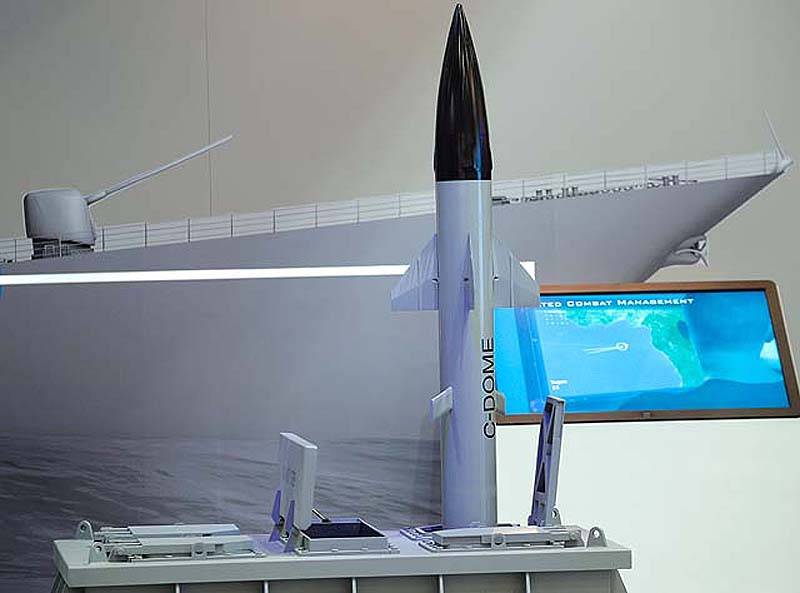
In November 2018, the Israeli army announced that the Rafael Naval Iron Dome complex had passed 18 monthly tests onboard the Sa'ar 5 corvette.
The S-Dome complex uses a vertical launcher mounted below the deck of the carrier ship. The launcher accommodates up to 10 launch containers loaded with Tamir vertical launch interceptor missiles. The S-Dome complex does not have a special surveillance and fire control radar, targets are detected using the ship’s standard radars, and the command and control unit is seamlessly integrated with the ship’s CMS. The company Rafael argue that the launchers do not require maintenance and due to the small area required for accommodation, the complex can be installed on small ships, for example, patrol ships of the coastal zone and corvettes. The C-Dome complex, integrated with the multifunctional radar complex IAI / ELTA ELM-2248 MF-Star (Adir) with four panels of PAR, successfully passed the tests, after which it was decided to install it on future Israeli corvettes of the Sa'ar 6 project. Meanwhile, the Israeli fleet decided to increase the number of Tamir interceptor missiles on board the new corvettes, their armament complex will include two 40-charging launchers of the C-Dome tactical SAM system.
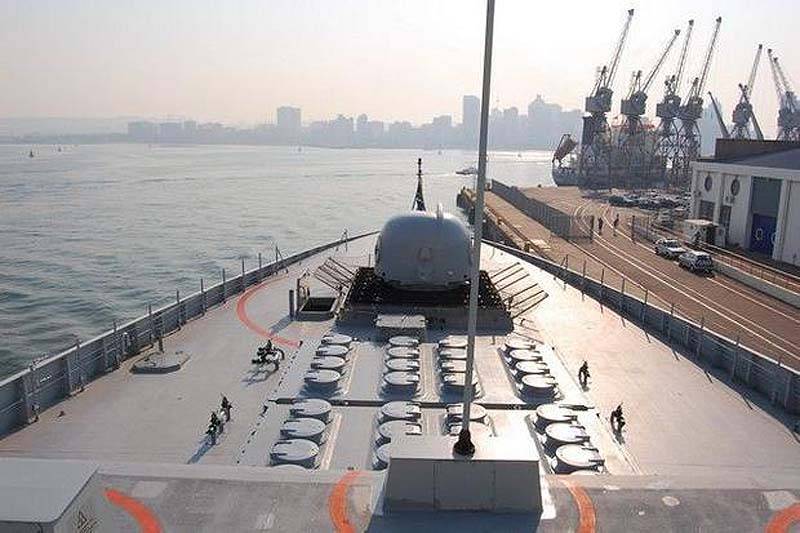
UMV air defense missile "Umhonto" on the frigate Amatola
Hamina High Speed Missile Boat
The Umkhonto (Spear) anti-aircraft missile launch complex was developed by Denel Dynamics (at that time Kentron) for the South African fleet for installation on frigates of the Valour project (Meko A200SAN). The complex provides all-round defense against simultaneous attacks of missiles, attack helicopters and UAVs, as well as stationary surface targets. The Umkhonto VL rocket with a length of 3,32 meters and a mass of 130 kg captures the target after launch, then flies to the capture point, following the commands of the on-board inertial navigation system. Next, the rocket activates its two-color IR GOS (air-to-air U-Darter version of the GOS) and captures the target, with high probability hitting it with its warhead of 23 kg. Updated target data is received through the data link, allowing the rocket to take into account target avoidance maneuvers. The Umkhonto missiles in 2002 were purchased by the Finnish Ministry of Defense for installation on high-speed Hamina-type missile boats and minelayers of the Hameenmaa class. The 2 version of the Block was subsequently modified for the Finnish fleet, a new software was installed and the range increased. This was done to make the complex better suited to the scenarios in which the navies of the Nordic countries work, as a rule, these are the coastal waters of the islands on the Baltic Sea. Denel Dynamics is constantly working to improve its products. Today, the Umkhonto rocket is offered with a range of 20 km and more functional infrared and radar guidance systems. In 2012, the Umkhonto complex was also commissioned by Algeria for installation on its new Meko A200 frigates. In turn, the Finnish fleet declared its desire to improve its Umkhonto missile systems.
The export version of the FL-2008N (Flying Leopard 3000 Naval) of the Chinese anti-aircraft missile system, presented in 3000, comes with different variants of launchers and one short-range missile HQ-10
The Chinese anti-aircraft missile system of object defense under the export designation FL-3000N (Flying Leopard 3000 Naval) was first shown in 2008 at an air show in Zhuhai. The complex includes one short-range missile HQ-10, which has no modifications, while the launchers can be several options. The HQ-10 rocket is based on an air-to-air TY-90 rocket, but has a larger diameter and a combined guidance system that includes radio command guidance and a thermal imaging homing device that is activated in the final segment of the trajectory than it resembles the American RAMAN missile. According to the developer, the company CASIC, the FL-3000N self-guided missile of the type “has a range of 9 km for subsonic targets and 6 km for supersonic targets”. The FL-3000N complex is capable of operating fully in automatic mode, and today, at least four variants are known, with 8-, 15-, 18- and 24 guides for missiles. The fire control system can simultaneously control two launchers, can be integrated into the ship’s battle control system or directly controlled by another battle control system. The FL-3000N complex is installed on almost all new ships of the Chinese fleet, and its export version was sold to Bangladesh.
The Taiwan Institute of Science and Technology presented the Sea Oryx short-range missile system in 2015 year.
In 2015, the Taiwanese National Institute of Science and Technology developed and introduced the Sea Oryx missile system for marine use and the protection of carrier platforms, mainly from anti-ship missiles. The Sea Oryx complex was developed to replace the artillery complex of the nearest frontier in service with the Taiwanese fleet. In fact, its missile is a version of the Tien Chien 1 anti-aircraft missile (Sky Sword 1), which is a part of the armament complex of the Indigenous defense fighter and ground-to-air defense system Antelope, which has been modernized and modified for sea conditions. The characteristics of the Sea Oryx rocket launched from the rotary multi-launch launcher are not disclosed, but the range of 9 km is reported, as well as the finalization of the propulsion system, folding control wheels and the guidance system, including the new data channel, thermal imaging homing system and inertial navigation system; in addition, the Sea Oryx rocket captures a target after launch in order to reduce the interception time. Recently, it was decided to modify the Sea Oryx rocket, integrate the new-generation thermal imaging seeker and make a number of other improvements.
Materials used:
www.shephardmedia.com
www.raytheon.com
www.thalesgroup.com
www.rheinmetall.com
www.kbptula.ru
www.leonardocompany.com
www.mbda-systems.com
www.rafael.co.il
www.deneldynamics.co.za
www.ncsist.org.tw
www.defensenews.com
www.pinterest.com
www.wikipedia.org
en.wikipedia.org
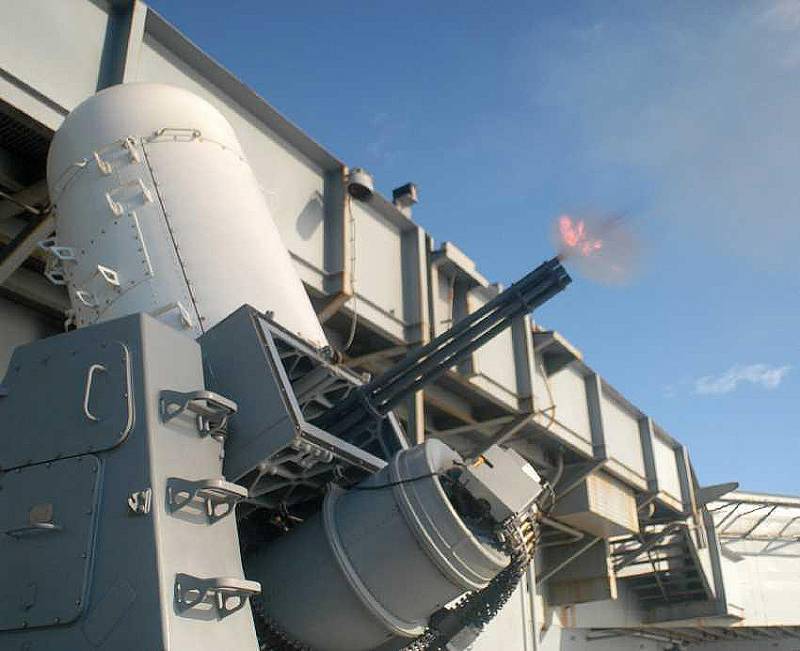
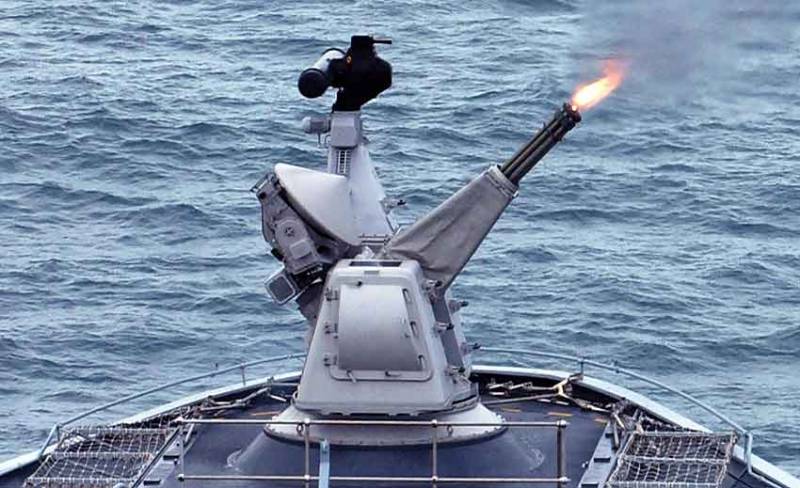
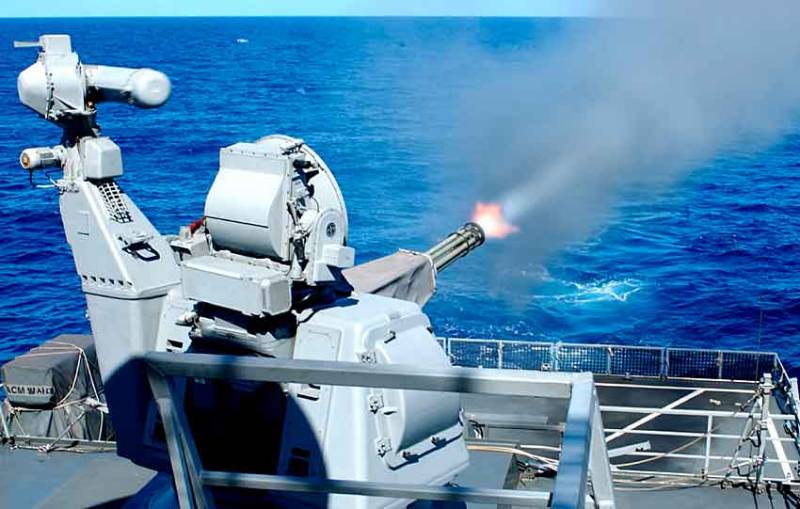
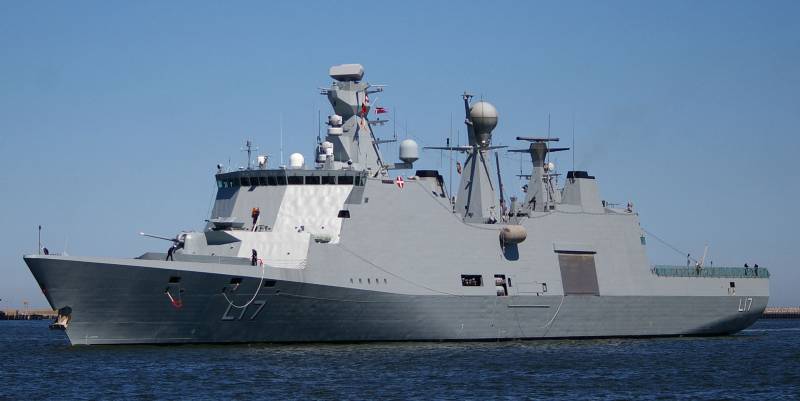
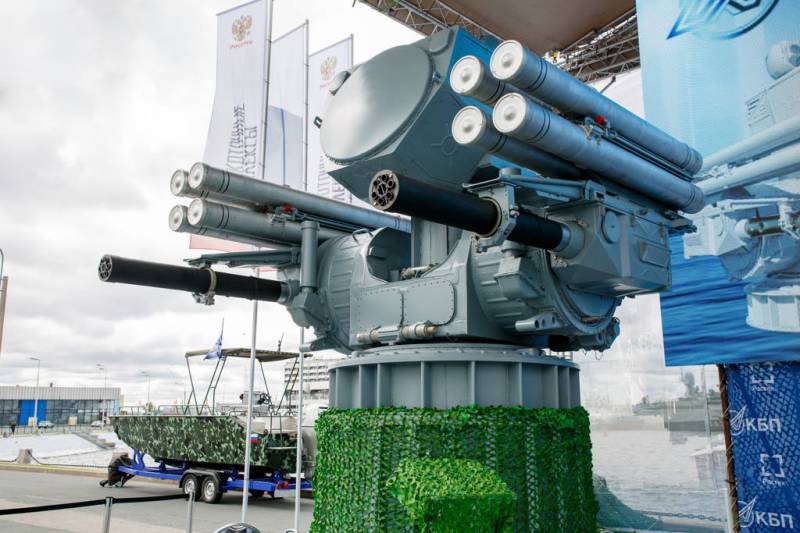
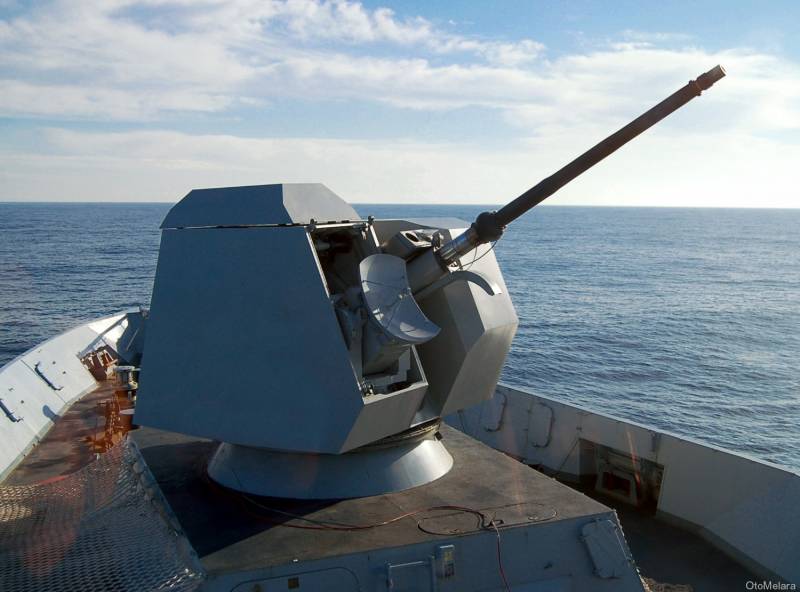
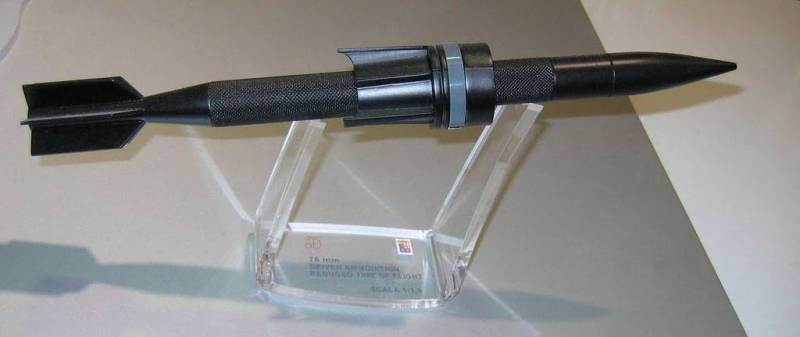
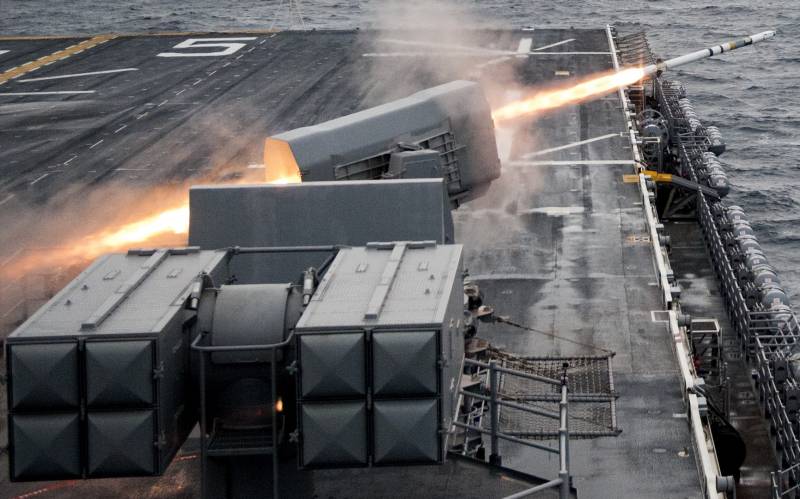
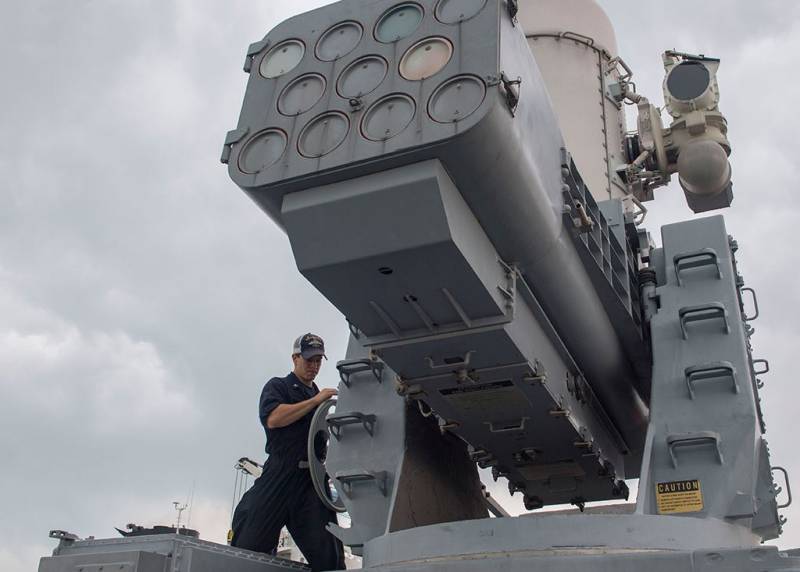
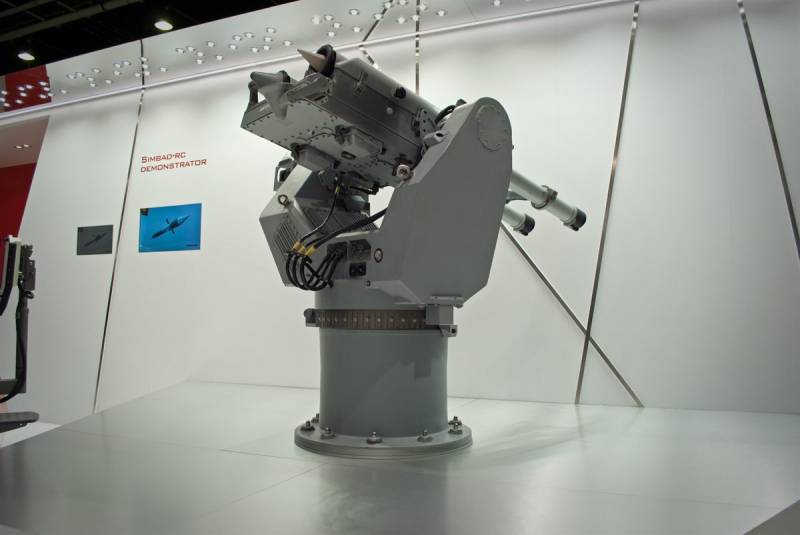
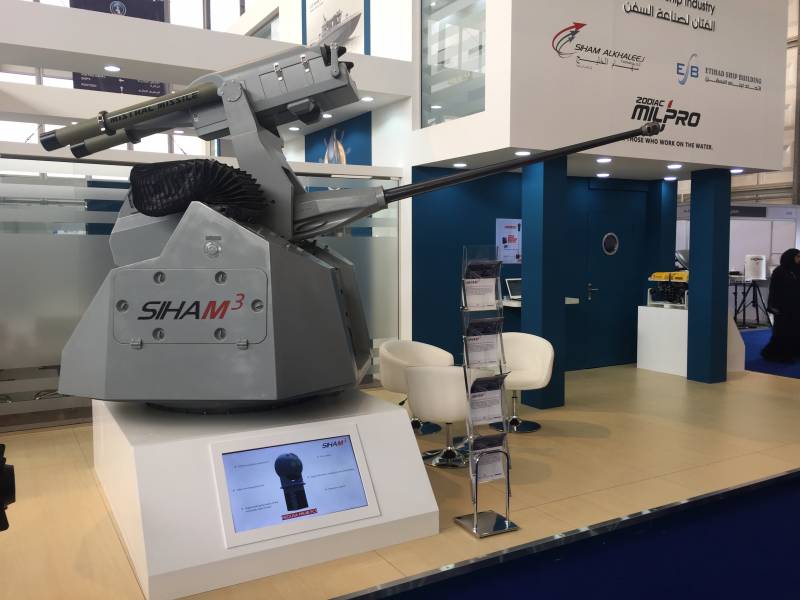
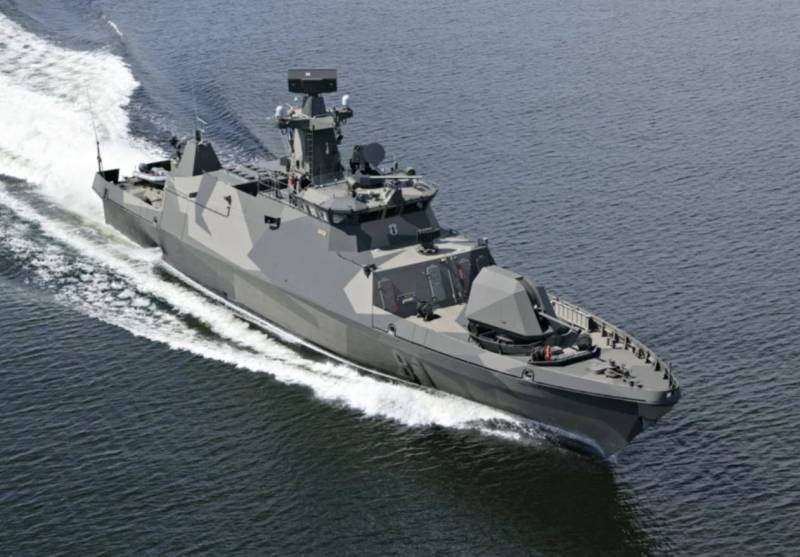
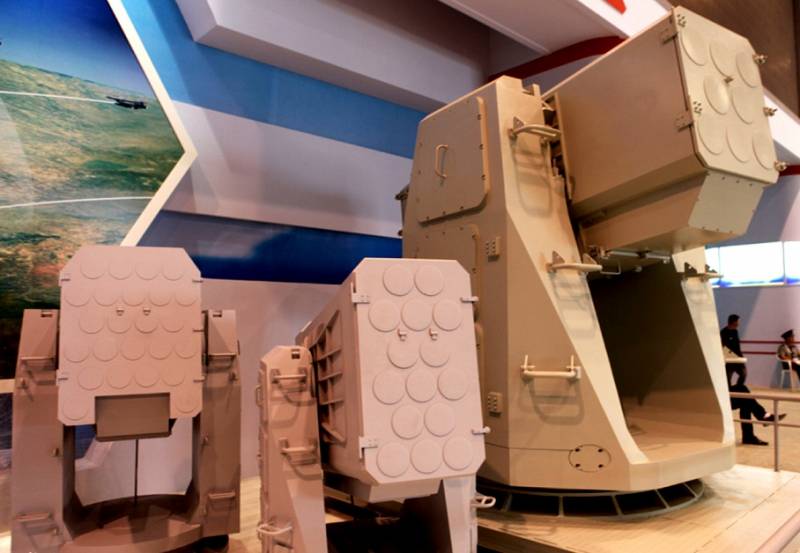
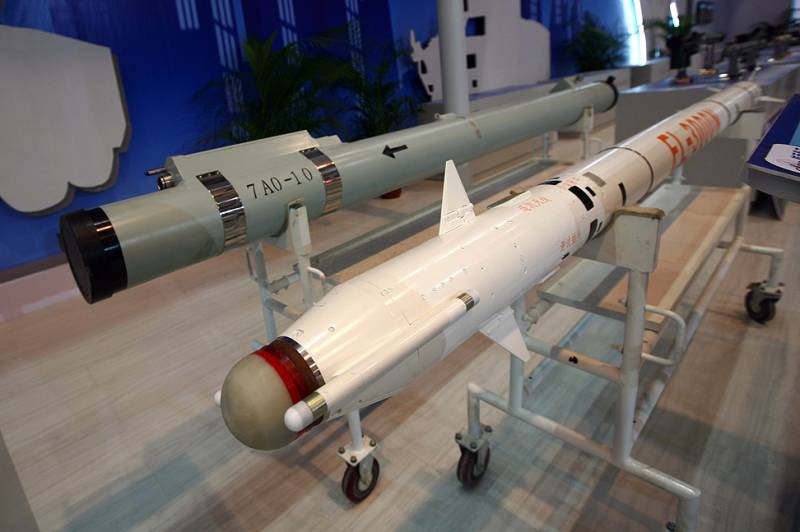
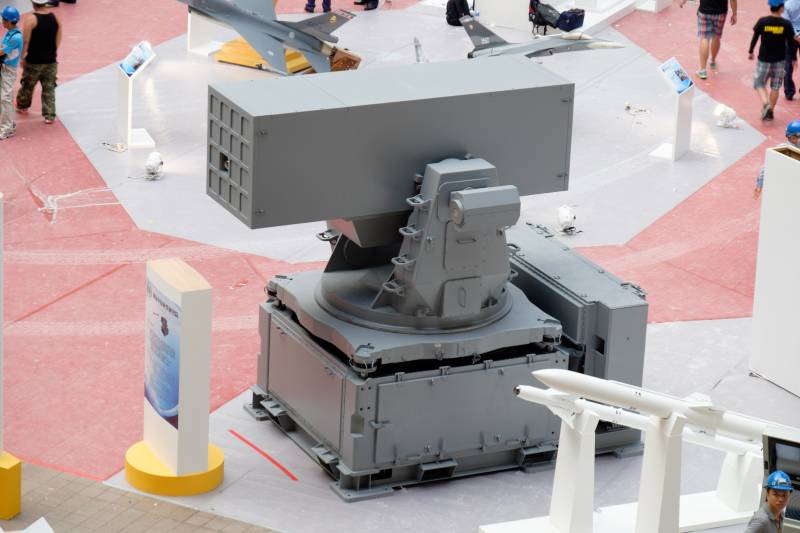
Information